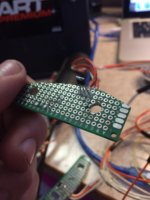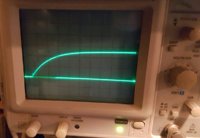sipma02
XS400 Enthusiast
I cant believe how long this has taken me... but I got a spark plug setup via arduino! This was all done in my dorm room at college, so the connections are sketchy at best. Acutally, Im not even going to send in a picture it was so sketchy haha. I got a spark though! Used an old computer charger, rated for 12v at 2.09 amps. The spark was incredibly weak - not NEAR enough to sustain an engine, but it was there nonetheless! I believe it was very weak because of the voltage drop in my sketchy connections, and the fact that I only had about 2 amps to play with.
I will include a picture of the sensor mounts. I think I finally developed the best possible way to mount them. Not unlike a Pamco setup. Which begs a question - why didnt I just go with that from the get go? Well for starters, it isnt made for a DOHC xs400. Secondly, I love learning about this kind stuff. Thirdly, theyre a little expensive (in reality, the time Ive spent on this far outweighs the $150 or so for the Pamco - if i could buy one of those, i probably would) but, I dont have a ton of cash around. Im about $15 into this project so far, and dont plan to spend more than another $15 on parts
I think its coming alone well though! So far I have:
-hall sensors/mounts
-coil firing via Arduino-sensed input from hall sensors
-primitive code written
Really, my next step is to get this system I created in my dorm onto a garage bench and less sketchy, mount the coils/arduino and test! Very excited to report the results!!
I will include a picture of the sensor mounts. I think I finally developed the best possible way to mount them. Not unlike a Pamco setup. Which begs a question - why didnt I just go with that from the get go? Well for starters, it isnt made for a DOHC xs400. Secondly, I love learning about this kind stuff. Thirdly, theyre a little expensive (in reality, the time Ive spent on this far outweighs the $150 or so for the Pamco - if i could buy one of those, i probably would) but, I dont have a ton of cash around. Im about $15 into this project so far, and dont plan to spend more than another $15 on parts
I think its coming alone well though! So far I have:
-hall sensors/mounts
-coil firing via Arduino-sensed input from hall sensors
-primitive code written
Really, my next step is to get this system I created in my dorm onto a garage bench and less sketchy, mount the coils/arduino and test! Very excited to report the results!!


